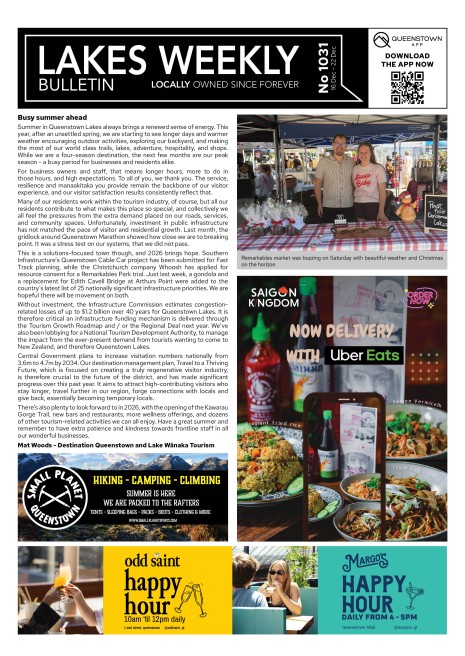Run Rabbit Run

They may seem soft and furry with their little bunny ears bobbing about our district, but for most people the cutesy reputation of the rabbit has long since worn thin.
Rabbits are a destructive force and it seems no matter what measures are implemented to try and keep their ever expanding populations under control they just keep breeding more because, well… they’re rabbits!
Residents in many subdivisions around the Wakatipu and Wanaka have noticed a remarkable increase in the number of rabbits taking over their streets, backyards and neighbourhood reserves.
Not only are they digging burrows, breaking through barricades to annihilate green foliage in vegetable gardens, but quite cheekily taking over lush green, well-watered lawns. Numbers have skyrocketed in the past few years with one Peninsula Bay resident in Wanaka saying they double or quadruple there every few months. “The rabbit problem is indeed a crisis. They’re spreading everywhere,” he says. “They used to be all around our area, but not in the neighbourhood like they are now.” Community feedback in Wanaka has even suggested going back to paying shooters $1 for a rabbit skin as in years gone by, but with safety issues prohibiting shooting in residential areas that’s not possible.
In Kelvin Heights they’re roaming the streets at night in larger numbers, and the sportsfield below Shotover Country is always amassed with rabbit poo, residents say. In parts of the district they’re described as a “moving landscape”.
Newly-established native trees and plants are also a target for rabbits.
Farmers in the area say it’s not the worst season they’ve seen and they’re able to keep the rabbit populations under control by shooting several a day. However, they say with the dry conditions and people watering lawns and gardens residential areas will be like a little oasis, attracting the rabbits.
Otago Regional councillor and Central Otago farmer Gary Kelliher says he’s long been an advocate for returning to something similar to the old Rabbit Board structure, disbanded by the government in 1989. Pest control was handed to what were then newly-formed regional councils. “I’ve yet to be convinced that (structure) is not the best idea. I think they felt it was too costly so now it’s up to the individual landowners to manage rabbits,” says Gary. “But they’re taking over residential areas now and the tools in built up areas are very, very limited,” he says. Guns aren’t permitted, bait laid and traps set may affect neighbourhood cats and dogs, so that narrows the options.
Farmers are doing their best despite a tough season, he says.
“I know rabbit numbers are high in the Wakatipu. It’s within the areas that ORC has targeted for more of a concerted effort. I believe the territorial councils have a responsibility to do more than they’re doing,” says Gary. “I think it’s time they upped their game. We need regular, ongoing maintenance programmes.” The fact that rabbits are moving into residential areas in large numbers is a sign how elevated the problem is, he says. Possum numbers are also on the increase.
However, a Queenstown Lakes District Council spokesman highlights a detailed professional night shoot, baiting, pellet and fencing programme in targeted areas laid out on the council website. The council is also about to start planning its winter pest control programme, which will be developed in conjunction with other landowners, ORC and DOC, he says.
Professional night shoots are also carried out regularly on open space green areas at Jack’s Point where Residential Precinct Committee chair, former district mayor Clive Geddes, says there’s been a major problem for almost three years. “The shoots net 50 to 100 rabbits, no trouble, and two months later we get the same amount again.”
“The number of rabbits in the district has grown enormously in the last five years and they’ve spread into residential areas where they can’t be shot, trapped or poisoned,” says Clive. “These explosions happen on a cyclical basis and only something like rabbit calicivirus will get rid of them.”
Clive doesn’t believe we can rid the district of rabbits through “bureaucratic structure” like rabbit boards though. Various measures have been tried but he says it’s almost impossible to get a consensus. “It’s up to the individual property owner.”
Queenstown Golf Club continues to hire a contractor to do well publicised, contractor night shoots also. Kelvin Heights greenkeeper Ian Douglas says that nets 15 to 20 a night every four to six weeks. “Six years ago it was much worse - dreadful. The first two nights they shot about 500 a night,” says Ian. “But they’re on the increase again. I can see that.” He still picks up some rabbits off the golf course that have died of calicivirus, but it’s been a good season for breeding, he says.









